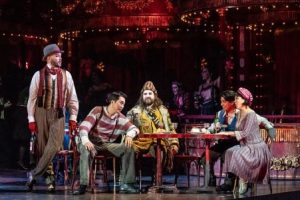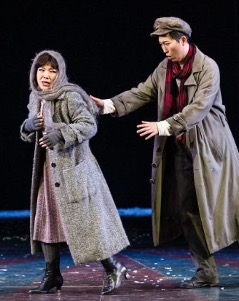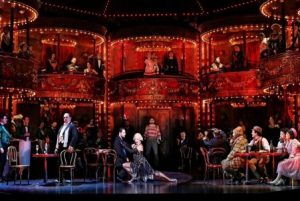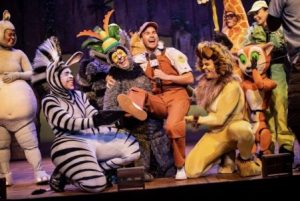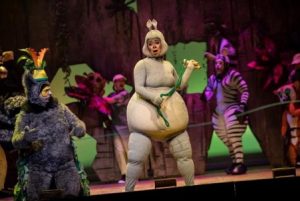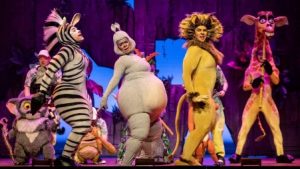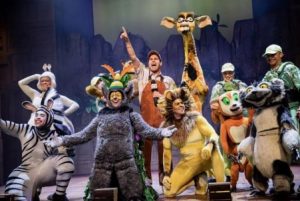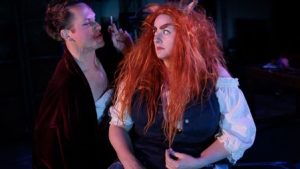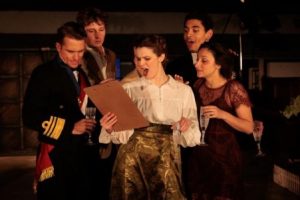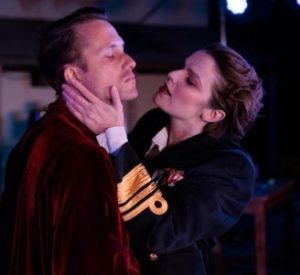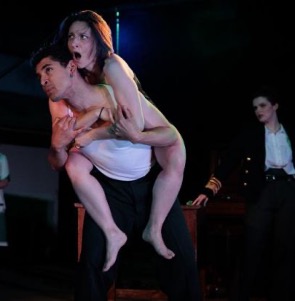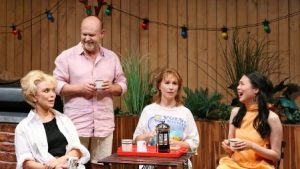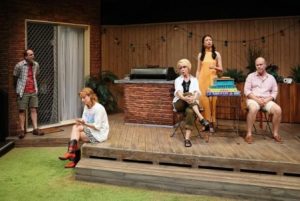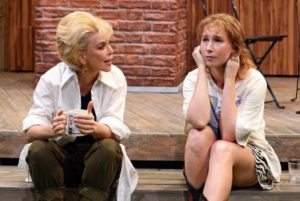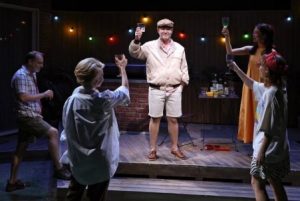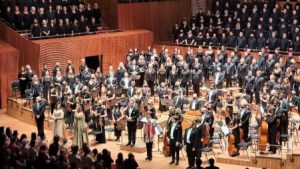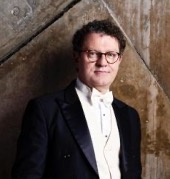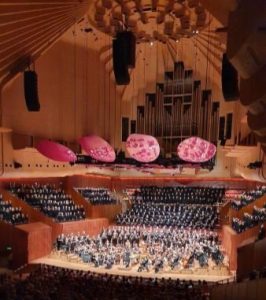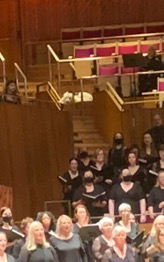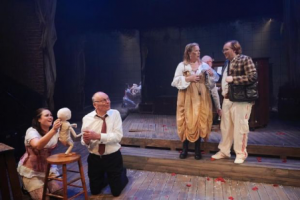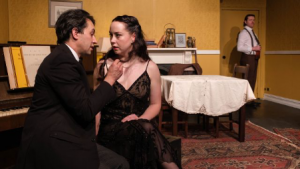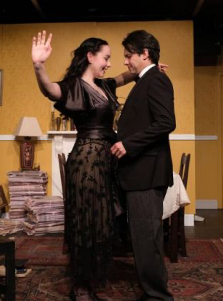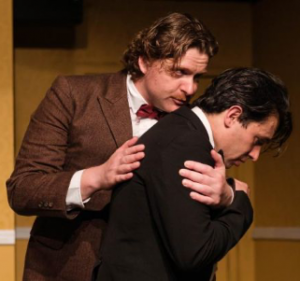By Jacob Rajan and Justin Lewis. Black Ink Theatre Company NZ. Sydney Festival. Director: Justin Lewis. Riverside Theatres Parramatta. 17-22 January, 2023
Reviewed : January 18, 2023 *
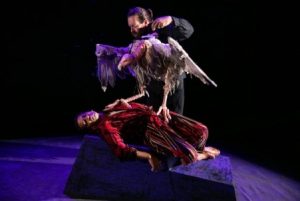
When you’re on your final journey, hovering between paradise and hell, haunted by the mistakes you made in the past, you don’t expect to be continually vexed by a vindictive vulture. But as vultures play an important part in Indian mythology – and Parsee sky burial customs – it’s not unsurprising that playwrights Jacon Rajan and Justin Lewis conjured a belligerent, feathered scavenger to make their hero Kutisar’s final journey even more confusing – and more amusing.
Justin Lewis directs this unusual and very complex performance from New Zealand’s multi-award-winning Indian Ink Theatre Company which Rajan and Lewis established over 20 years ago. Their aim was to create theatre “that is beautiful, funny, sad and true”, to create characters “who live large in our imaginations”. The company’s website explains their aim to produce works that blend “western theatrical traditions with eastern flavours and has been critically acclaimed for its use of live music, heightened theatricality, humour, pathos and great storytelling.”
Paradise or the Impermanence of Ice Cream – and Kutisar and his belligerent vulture – certainly do all of that.
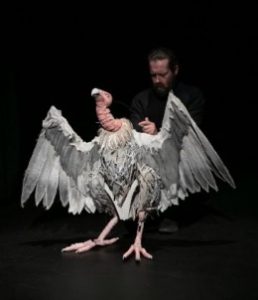
Jacob Rajan plays the ageing Kurtisar. His illusions begin as he lies dying. He’s disturbed by the ringing of a telephone, hears it go to voice message and realises it’s his own phone. He becomes agitated but when he tries to escape, erratic music forces him to dance wildly. Accepting this confinement, he begins to confront – and create – the characters that haunt him. He becomes himself as a young man selling chai in Mumbai; his girlfriend Meera, in her ice cream shop; a strident Parsi religious; Rao, Meer’s aunt; and an ardent authority on vultures.
Rajan creates each of these characters clearly and effectively, conversing with them in a constant, often hilarious series of interchanges. Each character is distinct, each is recognisable through telling gestures and vocal nuances. Each has dimension and depth. It is incredible to watch Rajan move between them, seemingly effortlessly, but with total control and clarity, yet still sustaining an energy that radiates from the stage and is infused by the humour that the playwrights have suffused into the dialogue.
Lewis directs with tight blocking that allows Rajan’s energy to be sustained through a very spirited and challenging performance. Only when confronted by the vulture does the momentum of the performance slow. It is in those moments that Kurtisar really faces his fate – and the fate of the vultures themselves.
Puppet maker and puppeteer Jon Coddington manipulates the feathered creature who returns again and again to plague Kurtisar. Awkward but wiley, as many scavengers are, Coddinton’s vulture swoops low and lands gracelessly, its big feet clawing, its pink neck stretching towards Kurtisar, its beak opening threateningly. Rajan and Coddington work cleverly together to create a relationship that is both touching and decidedly grim for both man and bird – and perhaps for much of the culture that Kutisar is remembering.
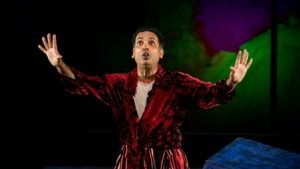
David Ward’s sound effects – music, ringing phones, knocking, the tapping of the vulture’s beak – are carefully synchronised by Adam Olgivie with a precision that is not often quite so evident to an audience. It is that exactitude, that meticulous attention to every detail that makes this production so absorbing – and enchanting. It moves so quickly, yet there is no moment when the timing isn’t precise, or where the tight energy lags. This is a production where director, actor, puppeteer, sound and lighting designers and operators work precisely together to create a performance that is one of a kind.
Indian Ink productions have a history of awards from New Zealand and from the Edinburgh. Festival. No wonder if Paradise or the Impermanence of Ice Cream is a gauge of their creativity and vision – and the quality of their productions
It’s one of the blessings of the Sydney Festival that we have productions such as this coming to Australia – and to our western Sydney stages. Do try and get to see this one while the chance is there!
Also published in Stage Whispers magazine
*Opening Night
